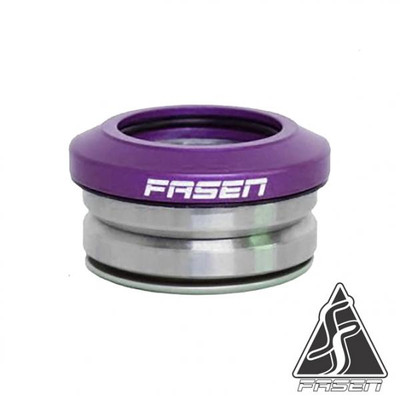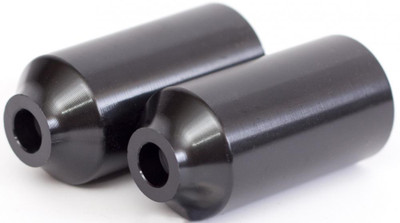What goes into a stunt scooter?
A stunt scooter is a more durable version of a regular kick scooter, used to perform tricks. Unlike regular scooters, they cannot be adjusted for height or folded, although bars can be purchased in different sizes. Typically, stunt scooters also weigh more. Whilst it may be quicker and easier to buy a pre-assembled scooter (which saves on buying all the parts and tools needed to assemble them), more advanced riders may wish to learn about the separate parts to create their own customised scooter.

Bar
The T-shaped part which attaches to the bottom half of the scooter is called the bar. More specifically, the handlebar attaches to the compression system. When buying a bar, it is important to ensure that it will be compatible with your compression system.

Compression System
The Compression System is what holds the bar, fork (the part that holds the front wheel) and deck together. The compression system will also extend the life of your scooter. There are three major types of compression system available.
To begin, the Standard Compression System (or SCS) is the strongest compression system available for stunt scooters due to it having a four-bolt clamp. Durability-wise, the SCS is the one to go for. In the SCS, one bolt is located halfway into the clamp, going down to the fork. This makes it even more sturdy, but still allows the scooter to spin. However, the SCS is not compatible with a bar that has a slit.
Next, the Hidden Internal Compression system (or HIC) is the most simple of the compression systems in terms of its structure and how easy it is to assemble. It is a two-bolt clamp, making it lighter than the SCS. Therefore, if you'd like both a simple and relatively light-weight ride, this is the one to go for. The HIC is also used commonly in stunt scooters with a bar that has a large internal diameter. This is because the HIC uses a shim, which makes the clamp tighter to fit around the bar, whilst still allowing the scooter to spin.
Lastly, the Inverted (or Internal) Compression System (or ICS) is the lightest and cheapest of the compression systems. Unfortunately, the downside is that the ICS is the most difficult to install, maintain and switch out. This is because it requires the removal of the front wheel to loosen and tighten it. It is also the weakest of the compression systems. If having a light-weight scooter is important to you (for example, for an easier time performing tricks) then this is the most suitable option. Be aware though that it will need regular maintenance and will need to be replaced every once in a while.

Headset
The headset is located beneath the compression system and shielded by the headtube. Inside the headset are the bearings (held between two cups) and a shim, if the scooter uses one. The headset is what allows the compression system and the fork to rotate around the bar.

Fork
The fork is where the front wheel is attached. This connects the front wheel to the bar and deck. When assembling your own stunt scooter, you need to be sure that the fork you are buying will be compatible with your specific compression system.

Wheels
Of course, every stunt scooter must have wheels! Typically, wheels of 110mm are the most common size, although this can range between 100-120mm. The larger your wheels are, the faster you'll go! For this reason, smaller wheels are usually better for stunt scooters to allow for better control.
The most common hardness tends to be around 85A on the durometer, and a solid wheel core is the best to go for over hollow or plastic as they are stronger, therefore last longer. In terms of the bearings, a lot of riders like to go for higher ABEC-rated bearings as they are more efficient and can cope with higher speeds.

Pegs
Pegs are an optional extra that can be added to the wheels. They come out of the sides of the wheels and can be leaned on to slow down and stop the scooter. They can also be used for stunts such as grinds.

Deck
The deck is the part of the scooter that you stand on. On the top surface of the deck you will need to apply grip tape to avoid slipping. The typical size of a deck for a stunt scooter is between 4.5-5" wide by 19.5-21" long. Of course, this is also the fun part of customising your own scooter, these come in many different colours and designs!

That wraps up on the anatomy of a stunt scooter! Has this post been useful to your decision-making process for purchasing a stunt scooter? Do you have any suggestions on additional information to include? Please, let us know!


